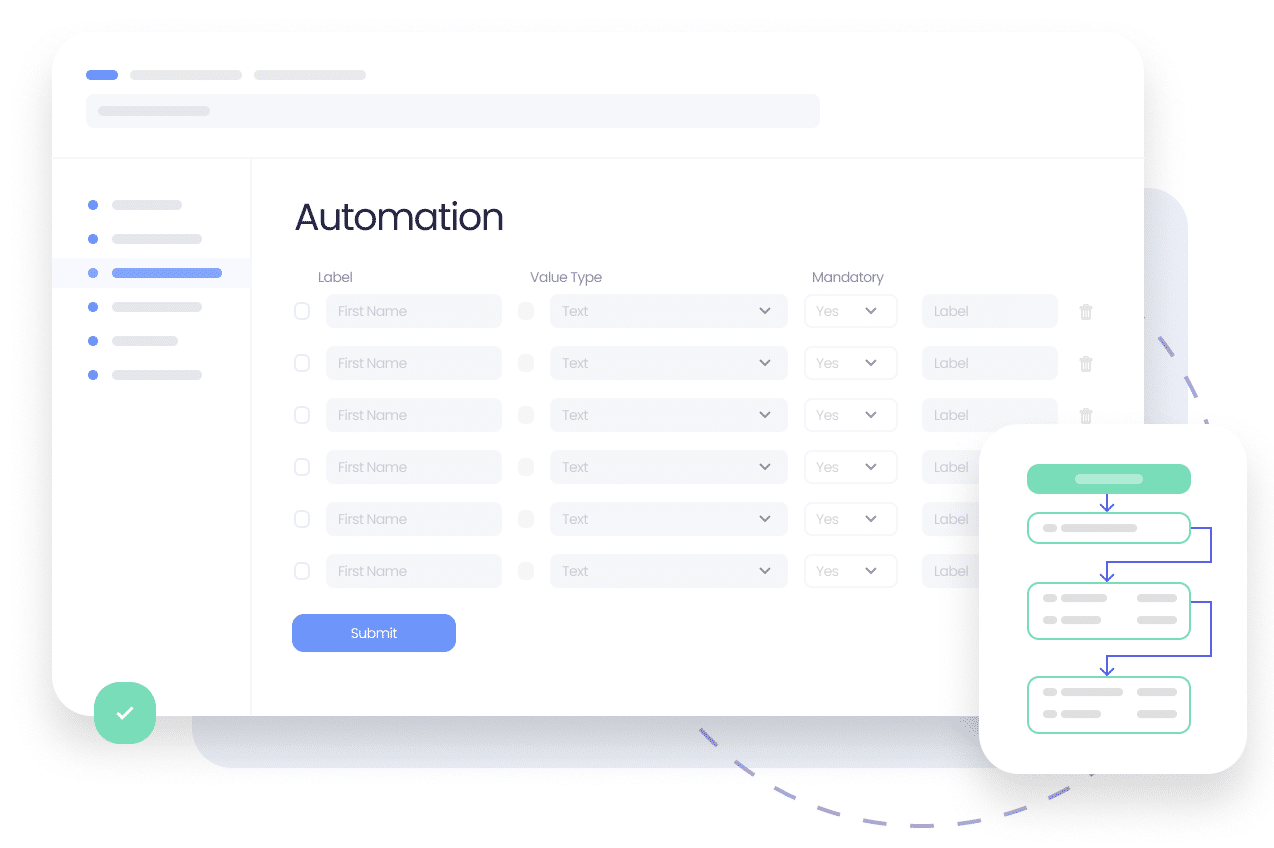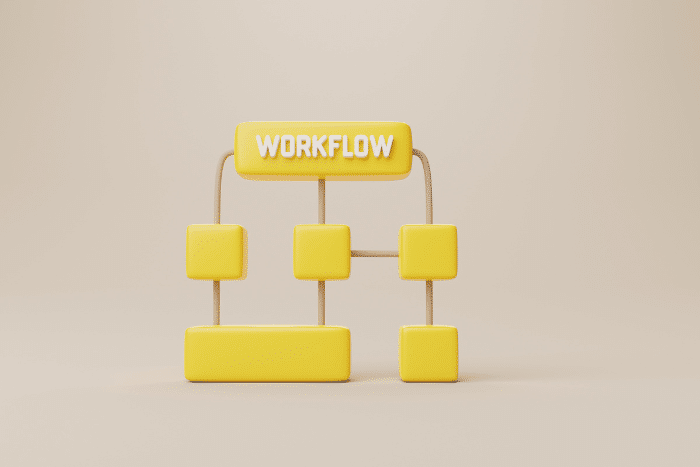Workflow Automation is changing the way organizations work. It has allowed them to simplify operations, collaboration, document, project, and people management. It has enabled them to shift from paper and manual work to digitized and automated tasks, activities, processes, etc. But what is it in reality?
What is Workflow Automation?
It is the automation of an orchestrated and repeatable sequence of tasks and activities to transform materials, provide a service, or process information. It includes the management of resources, such as time, or information, such as documents, needed along the workflow.
Workflow Automation is possible thanks to Workflow Management Systems, also called, Workflow Management Softwares. These provide the infrastructure for process design, defining the logic and rules behind the workflow automation. They make possible the automatic generation of documents, notifications, work assignments, requests, information sharing, storage, etc.
Workflow Automation allows organizations to automatically guide its users through the process. Therefore, reducing the time employees need to complete a task. Not only by eliminating manual work such as sending emails back and forth or calling to request information but also by eliminating human error and delays associated with not knowing the process. In the banking industry, for example, not knowing the process can lead to compliance issues with big legal consequences. One of the reasons why, especially the banking industry, benefits greatly from the use of Workflow Management Software.
However, around 50% of the activities people are paid to do globally, and up to 30% of the hours worked could be automated, according to McKinsey. This means that there are great savings and productivity improvement potential and a need for Workflow Automation.
→ How You Can Automate Manual Tasks With Digital Workflows
4 Benefits of Workflow Automation
If you’re reading this article you may already know some of the benefits coming from Workflow Automation. However, we want to underline some others that may not be so intuitive.
1. Training Time Reduction
The automation of your business processes allows your users to focus on what is more important. They will be productive sooner, without the need for long training sessions. Let’s take for example the hiring of a new Human Resources assistant that will be in charge of Onboarding. This person has already experience with Human Resources work but doesn’t necessarily know your internal processes. The automation of these steps will allow him/her to sit in front of the PC and be guided. He/she can be autonomous from day one with almost zero training.
2. Human Errors Reduction
No one is free from making mistakes, even less when under pressure. However, with a full playbook and a Workflow Management Software employees can be guided. It will be easier for them to follow the process. They won’t need to rely solely on their memory. Not only they will be able to automate requests, notifications, data sharing, but also know exactly what to do, when, and how.
Let’s take, for example, the complaint department in a bank. The person in charge of receiving complaints will know exactly the time they have to complete the claim. Also, the information will be automatically shared with those that need it. It won’t be the case that information wasn’t passed in time or that someone that needed it didn’t receive it. You won’t forget that there is a claim you haven’t started or passed on to another department. You will never lose a document again.
3. Operations Cost Reduction
Think of how much time you spend verifying and requesting information. Or storing, sending, printing, scanning, searching for documents, and following up on matters. You will be able to save all that time and resources when you automate your workflows. Notification, requests, and work assignments will happen automatically after a certain action is taken.
For example, after a customer submits an application, involved departments will be notified and workflow will start. Data will be automatically saved on an employee, vendor, client profile. You will see an increase in employee productivity and therefore cost per task reduction. Also, think of how much money your organization will save from spendings on paper that are later thrown away. And what about the environmental cost?
4. Transparency and Accountability
Workflow automation allows for quicker and accurate real-time data access. It allows full visibility regarding business processes, projects, tasks, cases. Real-time access to the status of claims or requests, estimated time of completion. Also who is working on what, in which department, how many claims certain employee is handling, etc. Your employees can have a clear understanding of which tasks they are in charge of and you of when work has been done. How long it takes to complete tasks or if mistakes have been made. You will also be able to understand which tasks may lead to bottlenecks. You will have a clear picture of your business processes and everything happening in your organization.
How Workflow Automation applies to Business Processes
Project Management
You can automate the entire project workflow steps, from idea to conclusion. Project scope identification, deadlines notifications, document production and sharing. All involved approval steps and work assignments that result from them. You can track time spent per activity, access real-time completed or in-progress work. You will automatically store information relevant to the project in the project file, etc. Workflow automation enables full collaboration with stakeholders, team members and vendors.
→ See What You Can Do With Virtus Flow’s Project Management App
Employee Onboarding
You can streamline all the interactions and work involved in onboarding a new employee. From sending automatic offer letters to coordinating with IT resources and access that need to be given. All the information and documentation you would usually request on day one, now you can ask it using Smart Forms. Instead of printing documents that the new employee needs to manually fill and HR later needs to scan, store in traditional PC folders or manually add to payment systems or spreadsheets, the employee will be guided and asked for required documentation according to his previous answers. You will automatically generate digital documents, and all entered information automatically stored in the employee profile. You can automate all processes around employee onboarding, from new employee requisition to training, evaluations, time-off requests, etc.
→ Simplify Your HR Processes. This Is How!
Sales Order Journey
You can automate every task, request, information sharing, work assignment, or event trigger around a sale. You can directly embed request forms on your website or portal. This will allow you to automate work from the moment a client asks for a quote to the moment he pays for it. You can automatically store all communications and documents in the vendor or client profile. You will be able to automatically generate documents after completing smart forms, sign electronically, and start the next steps automatically.
Adopt Workflow Automation with Virtus Flow’s Workflow Management Software
With Virtus Flow, you will be able to digitize and automate work in any department. From Human Resources to IT, Vendor Management, Customer Service, Facility and Asset Management, Compliance, etc. One single solution to streamline your business and take full advantage of Workflow Automation. Let us know what you are looking to solve and we will go the extra mile to help you. Let’s talk.













